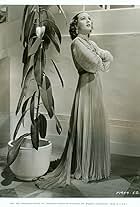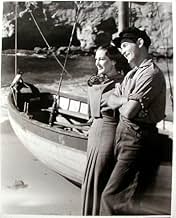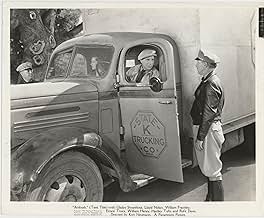Gladys Swarthout(1897-1969)
- Actress
- Soundtrack
This colorful diva of the Metropolitan Opera was one of several who
jumped on the operatic bandwagon during the 1930s to achieve film
stardom. Following her prima donna peers
Jeanette MacDonald,
Lily Pons and
Grace Moore to the silver screen,
Gladys' turnout would be meager and a major disappointment. Born in
Deepwater, Missouri, an Ozark mining town, in 1900 (some sources give
the years 1898 and even 1904), Gladys was schooled in Kansas City. A
delicate and sickly child, her singing talents were robust, however,
and she showed great promise at an early age. A local church soloist by
age 13, she attended the Bush Conservatory of Music in Chicago where
she received a Doctorate of Music in 1923. She joined the Chicago Civic
Opera Company the following year where she learned over 22 roles.
Training and performing in Europe in the late 20s, she made her
Metropolitan debut in 1929 with "La Gioconda". As one of the Met's
finest mezzos, her vast repertoire (25 in all) would include "Norma",
"Peter Ibbetson", "La Forza del Destino", "Mignon" and, notably,
"Carmen", which would become her signature role. While MGM had a
lucrative commodity in MacDonald, RKO was busy grooming Pons and
Columbia was putting Moore on glossy display. Paramount, in turn,
courted and recruited the lovely, brown-eyed Gladys for their
operettas. Rather docile and slightly meek in countenance, she
nevertheless signed a lucrative deal and her publicity was quite the
envy. She made an ambitious but ultimately unsuccessful debut in dual
roles with
Rose of the Rancho (1936). Not
only playing a Spanish senorita, she was handed the role of "Don
Carlos", the masked vigilante leader, due to her reputation on the
operatic stage for playing "trouser" roles. Opposite
John Boles, the film died fairly quickly at
the box office. Things did not get better.
Give Us This Night (1936)
fizzled despite a book by
Oscar Hammerstein II and a strong
leading man in Polish tenor Jan Kiepura, who
managed to outshine her.
Champagne Waltz (1937) lacked
both fiery songs and an engaging script. The mediocre
Romance in the Dark (1938),
which paired her again tritely with Boles, top-lined a declining
John Barrymore. But it was the
dull, non-singing melodrama Ambush (1939)
that clinched her final cinematic curtain. Radio, on the other hand,
was a superlative medium for Gladys. She was a vibrant guest on a
number of programs and had her own show in New York City, singing
everything from arias to spirituals to standards. She was named the #1
classical radio singer throughout the war years with sold-out
recordings and concert tours to match. It would take something tragic
to stop this workhorse diva and that's exactly what happened. Having
survived rheumatic fever as a child, she developed life-threatening
heart problems in later years and, following major surgery to repair a
valve, was forced into retirement by 1957. Her personal life was,
thankfully, quite blissful. Her second husband was opera singer
Frank Chapman, who gave up his
own career to manage hers. In the twilight years, they divided their
time between a Connecticut home and a villa in Italy. Chapman died in
1966 and Gladys, who remained childless, died of her heart ailment
three years later.















